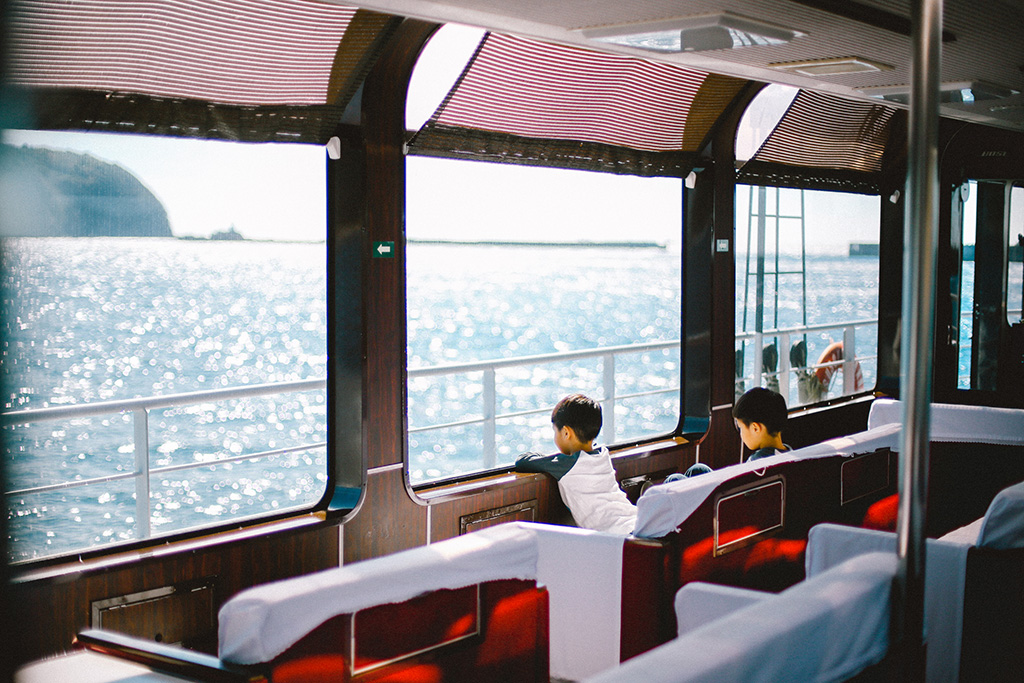A 50mm prime lens is one of the most versatile lenses a photographer could own, and there are many reasons to love it. In this article, one photographer shares with us how he uses his 50mm lens to create images in his distinctive style, where each image suggests a scene straight from one’s memories. (Reported by: Taishi Arashida, Digital Camera Magazine)

50mm @ f/1.4, 1/2000 sec, EV +0.7, ISO 100, WB: Auto
Why I love using 50mm lenses
I love using 50mm lenses because of their weak, natural perspective effect, which makes it easy to create natural-looking images.
If I were to consider just the angle of view, a 35mm lens shows more background context. However, the perspective that it creates can look unnatural depending on the shooting distance or angle. At shorter focal lengths, there would be strong perspective distortion on the subject’s face. On the other hand, if the focal length is too long, the image could end up looking too flat.
In comparison, a 50mm provides a more consistent look—there still is a sense of perspective, but there isn’t much perspective distortion even when you tilt the camera.
When I shoot, I often aim to create an image that suggests that it is a scene from one’s memories. It’s easier to get the look that I want with the stable, familiar angle of view provided by a 50mm lens, especially if the lens also achieves the slightly soft look that resembles that of vintage lenses. The EF50mm f/1.4 USM is one such lens.

50mm @ f/1.4, 1/6400 sec, EV +1, ISO 100, WB: Auto
I was drawn to the sight of the shirt fluttering about in the sea breeze. This was shot with the camera tilted slightly downwards. I was careful not to tilt the camera too much, as that would cause visible perspective distortion especially in straight-line elements such as the balcony fencing. The moderate perspective of a 50mm lens gave me more flexibility to work with different camera angles than possible with a wide-angle lens.
Pro composition tips, Arashida style

50mm @ f/1.4, 1/3200 sec, EV +1, ISO 100, WB: Auto
1. Create a quiet composition by controlling the leading lines
Using leading lines to create a sense of perspective and guide the viewer’s eye works especially well with wide angle lenses, which inherently exaggerate perspective. However, it doesn’t work as well with a 50mm lens, which has much weaker perspective. I try not to incorporate any element that moves the viewer’s line of sight, which could distract them. Instead, I aim for an atmosphere that is somewhat “quieter”.
2. Use background and foreground blur to create layers and dimension
I don’t deep focus when I use a 50mm. I feel that having everything in sharp focus makes the image look flat, especially since the 50mm already has weak perspective. Other photographers may have other ways, but my style is to use a wide aperture and create background bokeh—or foreground bokeh if it fits the scene.
---
What’s your 50mm style? Share it with us on My Canon Story, or tag us on social media with #canonasia
For more tips on making the most of a 50mm lens, also see:
Professional Composition Techniques (3): Making Good Use of Lenses
Standard Lens Techniques: Using the Point of View to Draw the Viewer In
EF50mm f/1.8 STM: A Review with Useful Composition Tips
Receive the latest update on photography news, tips and tricks.
Be part of the SNAPSHOT Community.
Sign Up Now!About the Author
A monthly magazine that believes that enjoyment of photography will increase the more one learns about camera functions. It delivers news on the latest cameras and features and regularly introduces various photography techniques.
Published by Impress Corporation
Based in Tokyo, Taishi Arashida photographs mainly families and urban scenes, provides images to local and overseas media platforms, and is also a photography instructor. He is the author of two books: Dejitaaru de Firumu o Saigenshitai [Replicating Film in a Digital Medium], and Kamera ja naku, Shashin no Hanashi o Shiyou [Let’s Talk About Photography, Not Cameras], both published by Genkosha.


































